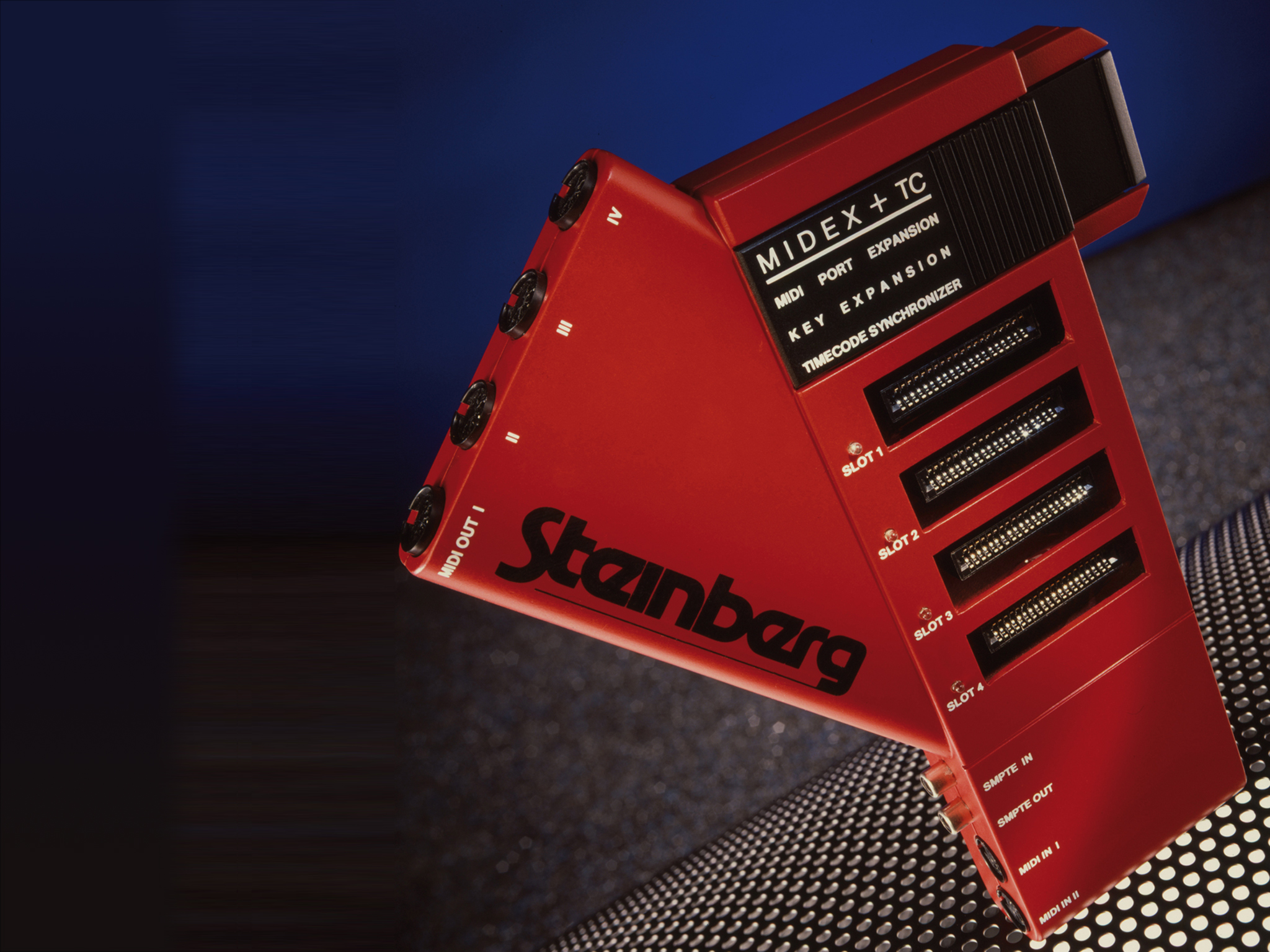
Steinberg Midex
Atari introduced a whole new generation of computer users to music making towards the end of the Eighties with its game-changing ST line, the first to feature an integrated MIDI interface. Developing DEM (Data Entry Management) music-making software, Manfred Rürup and Charlie Steinberg’s Hamburg-based company Steinberg pioneered computer sequencing on the Atari ST with Cubase, but it soon became apparent that a single MIDI input was sufficient for many. Midex was supposed to solve this problem and also provide both manufacturer and user with several slots for the then-typical copy protection keys in the form of four additional 40-pin ROM ports. With Midex, it was possible to run up to four programs on one computer at the same time.
Midex was plugged into the side of the Atari computer case. The basic body is an elongated block housing the four key slots. The additional four MIDI outputs dock from the side/top and are inclined into the main body. The rounded edges of the penetrating part of the housing symbolise a visual connection to the (round) MIDI connector, while the basic body in its angular design takes up the style of the (SCSI) interfaces for the software dongles. The MIDI outputs are therefore clearly separated from the two MIDI inputs, which are located on the left side of the basic housing. The cable routing of the MIDI outputs is directed towards the sound generators while the two inputs are located front left on the basic housing — towards the (master) keyboard/controller units.
Midex was docked to the left side of the Atari 1040ST and to the rear of the more professional Mega ST series that had followed. The designated plug-in shoe was locked by a snap-mechanism. The black latch, which is also made of plastic, sits on top of the case and stands out clearly from the plastic case, which is otherwise kept in red. On the left side is the product name, including its function. The grooved area to the right indicates the pressure point for releasing the locking and decoupling from the computer.
Like all my early designs, Midex was drawn purely on paper — from first sketch ideas to carefully executed renderings, which were presented to the development team backed by Wolfgang Düren (Waldorf Electronics) and Manfred Rürup (Steinberg). Model making came at the end of the creative process, a photo of which was then taken by Ralf Häselich. From the model I then derived the technical drawings, which were to serve as a template for the plastic mould-making process. During the production of the drawings, based on a healthy half-knowledge from freshly-finished industrial design studies, I watched the fall of the Berlin Wall and the opening of the GDR (German Democratic Republic) on television.
When we received the first plastic moulds for approval, I was horrified to discover that the docking height of the Atari 1040ST and Mega ST differed by a few millimeters and we had to make a revision to the expensive plastic mould construction. Consequently, Wolfgang cut my salary for 14 months! Seriously, he did not. Nevertheless, I felt bad because I had not made sufficient allowance for this important detail.

